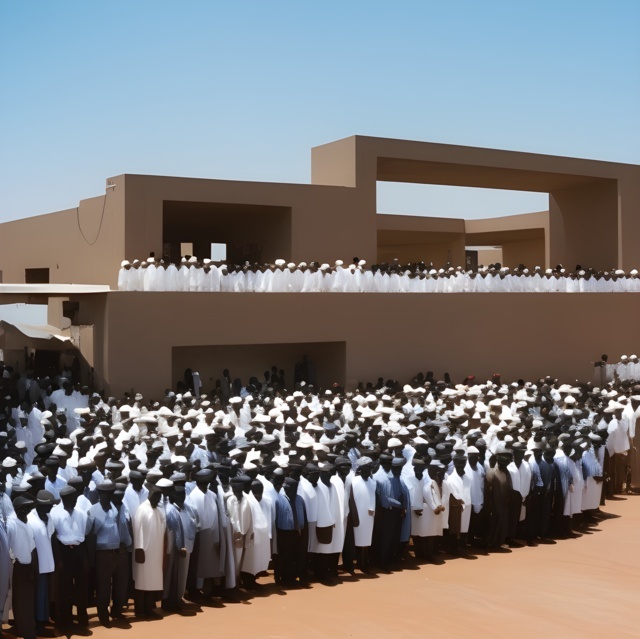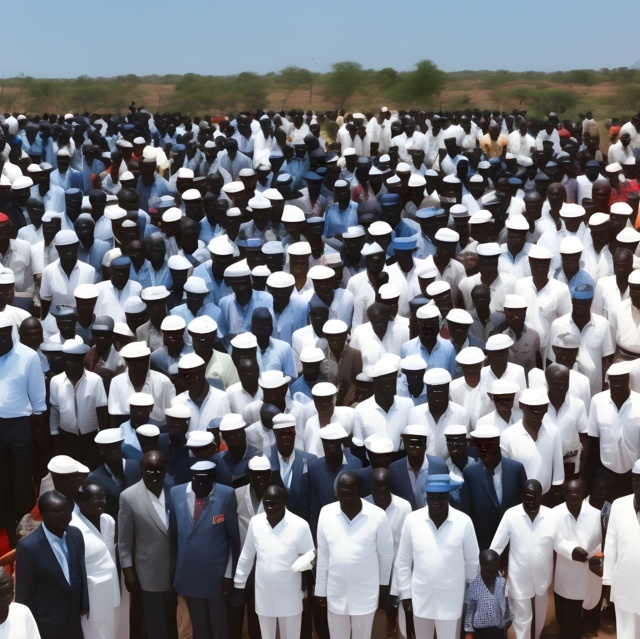Botswana is a landlocked country in Southern Africa, with a population of about 2.3 million people and a land area of 581,730 square kilometres. Despite its arid and semi-arid climate, Botswana has a thriving beef industry, which accounts for about 80% of its agricultural exports and 3% of its gross domestic product (GDP). Botswana’s beef industry is largely based on the Botswana Meat Commission (BMC), a parastatal organization established in 1965 by an act of parliament to promote the development of the country’s beef and related products globally.
The BMC operates three abattoirs in the country: Lobatse, Francistown and Maun. The Lobatse abattoir is the oldest and largest of the three, with a capacity to slaughter 1,200 cattle and 800 sheep per day. The Lobatse abattoir was opened in April 1987, with assistance from the European Economic Community (EEC), which provided a loan of 25 million European Currency Units (ECU) for its construction and equipment. The opening of the Lobatse abattoir was a milestone in Botswana’s beef industry, as it enabled the BMC to meet the stringent sanitary and quality standards required by the EEC market, which was the main destination for Botswana’s beef exports.
State of the Lobatse Abattoir
The Lobatse abattoir has been operating successfully for over three decades, processing and exporting high-quality beef products to various markets around the world, including the EEC, Norway, Switzerland, South Africa, Zimbabwe, Angola, Mauritius and Hong Kong. The Lobatse abattoir has also contributed to the socio-economic development of Botswana, by providing employment opportunities, income generation, skills development and technology transfer for thousands of workers, farmers, suppliers and service providers. The Lobatse abattoir has also been involved in various corporate social responsibility initiatives, such as supporting local schools, health facilities and community projects.
However, the Lobatse abattoir has also faced some challenges and threats over the years, such as droughts, animal diseases, competition from other beef exporters, fluctuations in demand and prices, trade barriers and disputes, environmental issues and operational inefficiencies. The BMC has been trying to overcome these challenges and threats by implementing various strategies and measures, such as diversifying its markets and products, improving its production efficiency and quality control, enhancing its marketing and branding, upgrading its infrastructure and equipment, investing in research and development, strengthening its stakeholder relations and governance structures, and seeking external support and partnerships.
Conclusion
The Lobatse abattoir is a success story of Botswana’s beef industry, which has shown resilience and adaptability in a dynamic and competitive global market. The Lobatse abattoir is also a testament to Botswana’s political stability, economic growth, good governance and prudent management of its natural resources. The Lobatse abattoir is an example of how a state institution can foster effective economic development by aligning its objectives with the national interest and the common good.
References
– Class and Effective State Institutions: the Botswana Meat Commission. Abdi Ismail Samatar and Sophie Oldfield. The Journal of Modern African Studies , Vol. 33 , No. 4 (Dec., 1995), pp. 651-668
– History and Organization – BMC. https://www.bmc.bw/history-and-organization/
– Botswana Meat Commission (BMC) – Lobatse – ProdAfrica Business Directory. https://maps.prodafrica.com/places/botswana/south-east-district/lobatse/food-1/botswana-meat-commission-bmc-lobatse-botswana/
– Class and Effective State Institutions: the Botswana Meat Commission. https://www.cambridge.org/core/journals/journal-of-modern-african-studies/article/abs/class-and-effective-state-institutions-the-botswana-meat-commission/E2B2FA5C4A1A6F0DC909B0CEF281A5B1
Tags
Divi Meetup 2019, San Francisco
Related Articles
Unappreciated Greatness
Life and Legacy of Jahangir of the Mughal Empire. Jahangir ruled over one of the largest empires in human history during his lifetime, yet few people outside of South Asia have heard of him. I aim to shed light on the life and legacy of this remarkable figure,...
The Plague Doctor’s Diary
A Personal Account of the Turin Epidemic of 1656. I am writing this diary to record my experiences and observations as a plague doctor in Turin, the capital of the Duchy of Savoy, during the terrible epidemic that has afflicted this city and its surroundings since the...
The Timeless Beauty of Bustan
Unveiling the Secrets of Saadi Shirazi's Masterpiece.In the realm of Persian literature, few works have captured the essence of love, spirituality, and morality quite like Bustan (The Orchard) by Saadi Shirazi. This 13th-century masterpiece has left a lasting impact...
Stay Up to Date With The Latest News & Updates
Explore
Browse your topics of interest using our keyword list.
Join Our Newsletter
Sign-up to get an overview of our recent articles handpicked by our editors.
Follow Us
Follow our social media accounts to get instant notifications about our newly published articles.









